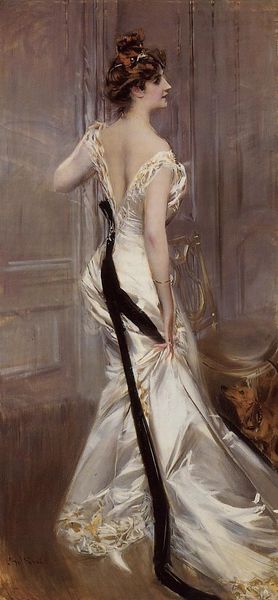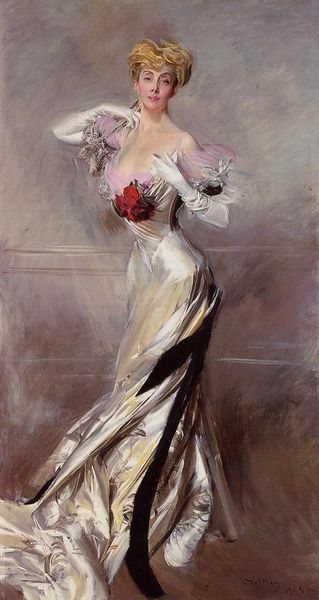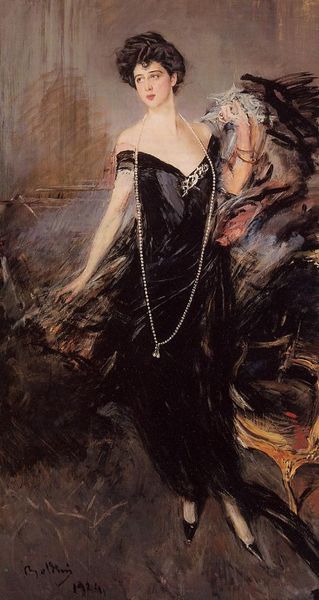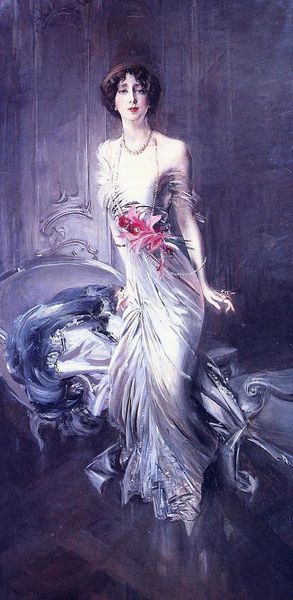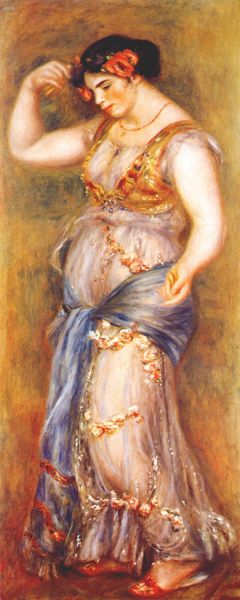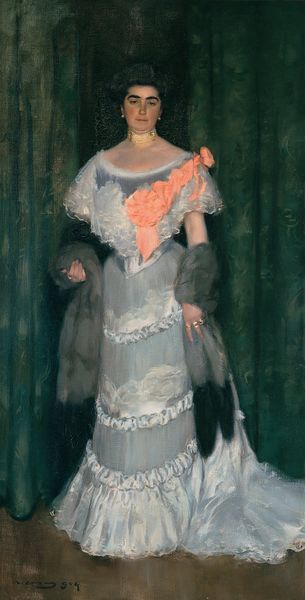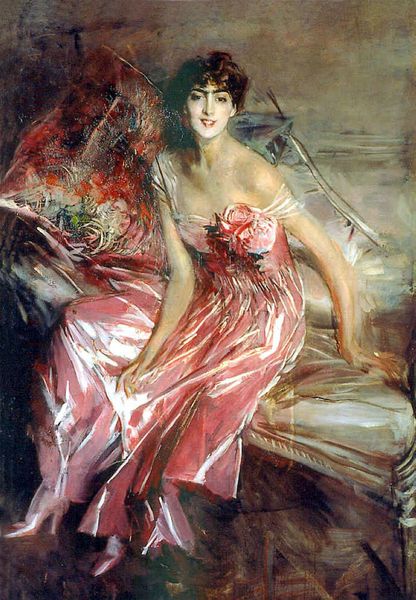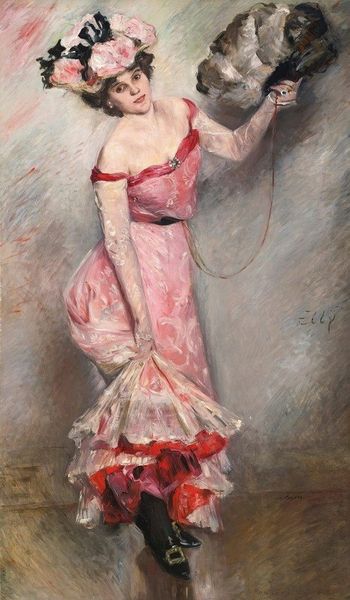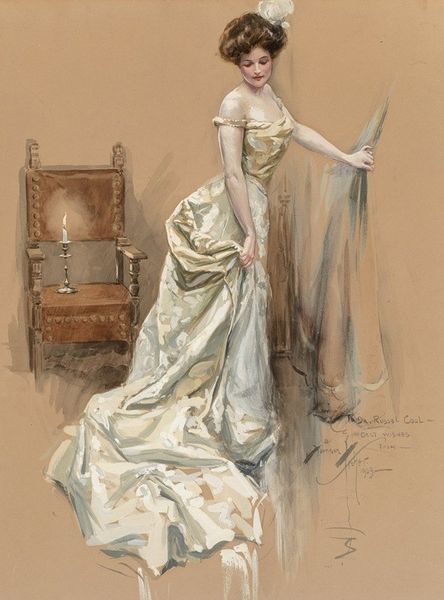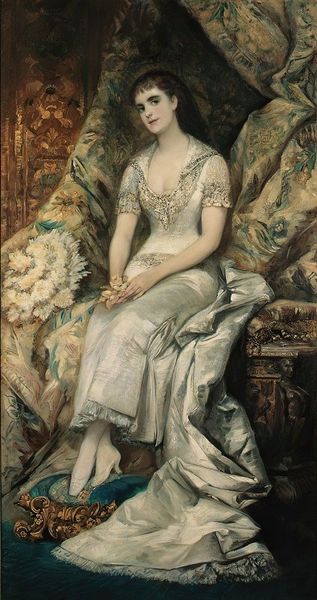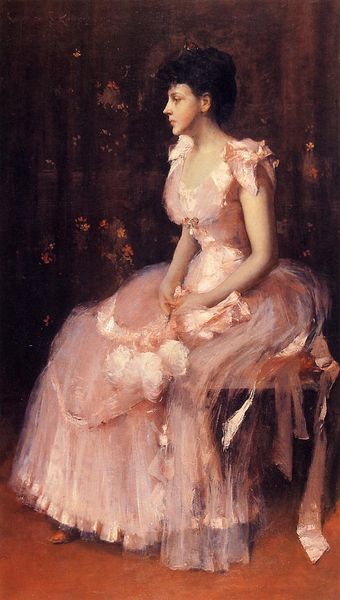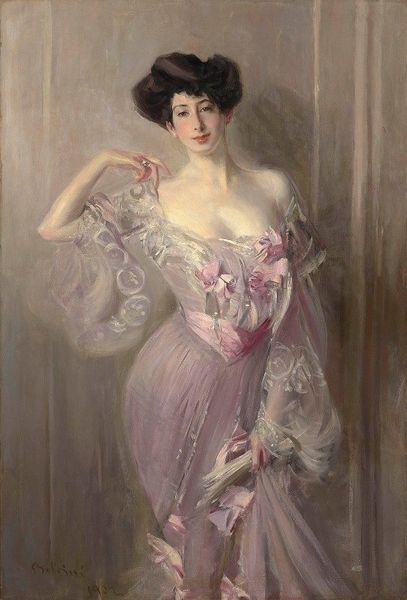
Copyright: Public domain
Curator: Oh, I find this piece so captivating! The energy practically vibrates off the canvas. It's Giovanni Boldini's "Portrait of Elizabeth Wharton Drexel," painted around 1905. A glimpse into gilded-age glamour. Editor: Gilded, indeed! My first impression is that it is a fascinating snapshot of Belle Époque society with a sharp class consciousness evident. Look at the unapologetic opulence! The painting practically drips privilege. Curator: You're not wrong. Boldini was known for capturing that extravagant lifestyle. It’s almost like a performance, don't you think? The sitter's pose, her elaborate gown…everything designed to impress. And the swift brushstrokes. A maestro’s signature flourish. Editor: It is performative, yes, a constructed image of ideal femininity, reinforcing power structures of the time. Elizabeth Wharton Drexel, later Lehr and still later, Lady Decies was a figure of considerable social standing. Her philanthropic endeavors are notable and can't be discounted, yet her privileged status allowed her access to resources and opportunities unavailable to most women of her time. Her influence on societal reform efforts and the political implications of wealth must also be highlighted here. Curator: Absolutely. There's that delicious tension, isn't there? Between the sheer beauty of the artwork and its underlying implications. And the color palette! That coral gown against the muted background creates such a striking contrast. Also, is that tiny dog I see? So precious and spoiled. Editor: These canine companions frequently appeared alongside affluent women. Beyond mere adornment or comfort, it seems as though they almost acted as surrogates. Often devalued due to pervasive misogyny, some affluent women saw reflections of their lived circumstances in the subservient role and dependency of the lapdogs, which resulted in a great amount of identification and tenderness. Curator: How intriguing! I suppose it can be looked at that way, or maybe as a fashion accessory? There's always room for nuance, right? What I love most is how Boldini managed to convey so much movement and life. That almost casual elegance that he captures so effortlessly. I often wondered whether it really WAS effortless...or if, just like this lady, he constructed an illusion. Editor: And therein lies the core complexity of portraiture during periods of inequality: how much of the story are we being told, and who gets to tell it? Art as both reflection and perpetuation. Fascinating indeed. Curator: On that bombshell, I shall say good day. It’s been delightful delving into this artwork with you and sharing my viewpoint. Editor: Yes, until the next cultural critique! Thank you.
Comments
No comments
Be the first to comment and join the conversation on the ultimate creative platform.
